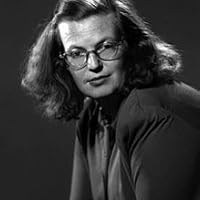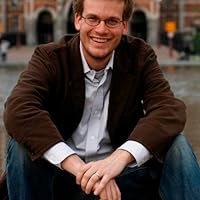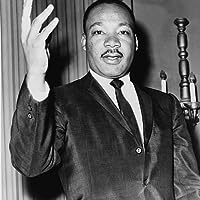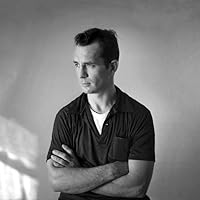Suburbs Quotes
Quotes tagged as "suburbs"
Showing 1-30 of 62

“Chicago happened slowly, like a migraine. First they were driving through countryside, then, imperceptibly, the occasional town became a low suburban sprawl, and the sprawl became the city.”
― American Gods
― American Gods

“If you want to see how far we have not come from the cave and the woods, from the lonely and dangerous days of the prarie or the plain, witness the reaction of a modern suburban family, nearly ready for bed, when the doorbell rings or the door is rattled. They will stop where they stand, or sit bolt upright in their beds, as if a streak of pure lightning has passed through the house. Eyes wide, voices fearful, they will whisper to each other, "There's someone at the door," in a way that might make you believe they have always feared and anticipated this moment - that they have spent their lives being stalked.”
―
―

“Upstairs Margaret said abruptly, 'I suppose it starts to happen first in the suburbs,' and when Brad said, 'What starts to happen?' she said hysterically, 'People starting to come apart.”
― The Lottery and Other Stories
― The Lottery and Other Stories

“Just for a while": Death's opening chat-up line in His great seduction, before he drugged you with soporific comforts, distracted you with minor luxuries and ensnared you with long-term payment plans.
Join the Rat Race "just for a while."
Concentrate on your career "just for a while."
Move in with your girlfriend "just for a while."
Find a bigger place, out in the burbs "just for a while."
Lie down in that wooden box "just for a while.”
― A Big Boy Did It and Ran Away
Join the Rat Race "just for a while."
Concentrate on your career "just for a while."
Move in with your girlfriend "just for a while."
Find a bigger place, out in the burbs "just for a while."
Lie down in that wooden box "just for a while.”
― A Big Boy Did It and Ran Away

“There is a widespread belief that americans hate cities. I think it is probable that Americans hate city failure, but, from the evidence, we certainly do not hate successful and vital city areas. On the contrary, so many people want to make use of such places, so many people want to work in them or live in them or visit in them, that municipal self-destruction ensues. In killing successful diversity combinations with money, we are employing perhaps our nearest equivalent to killing with kindness.”
― The Death and Life of Great American Cities
― The Death and Life of Great American Cities

“Others saw in the trend still another instance of a disturbing tendency in the American suburb: the longing for withdrawal, for self-enclosure, for expensive isolation.”
― Dangerous Laughter
― Dangerous Laughter
“It was like hundreds of roads he'd driven over - no different - a stretch of tar, lusterless, scaley, humping toward the center. On both sides were telephone poles, tilted this way and that, up a little, down...
Billboards - down farther an increasing clutter of them. Some road signs. A tottering barn in a waste field, the Mail Pouch ad half weathered away. Other fields. A large wood - almost leafless now - the bare branches netting darkly against the sky. Then down, where the road curved away, a big white farmhouse, trees on the lawn, neat fences - and above it all, way up, a television aerial, struck by the sun, shooting out bars of glare like neon. ("Thompson")”
― Shock!
Billboards - down farther an increasing clutter of them. Some road signs. A tottering barn in a waste field, the Mail Pouch ad half weathered away. Other fields. A large wood - almost leafless now - the bare branches netting darkly against the sky. Then down, where the road curved away, a big white farmhouse, trees on the lawn, neat fences - and above it all, way up, a television aerial, struck by the sun, shooting out bars of glare like neon. ("Thompson")”
― Shock!

“I am opposed to Naperville. It's all cute, trendy and expensive, and filled with cookie-cutter Borg houses that assimilate you into upper-middle-class America.”
― Bewitched, Blooded and Bewildered
― Bewitched, Blooded and Bewildered

“In 1995 Bank of America issued a famous report on sprawl in California. The bank pronounced: 'Urban job centers have decentralized to the suburbs. New housing tracts have moved even deeper into agriculturally and environmentally sensitive areas. Private auto use continues to rise. This acceleration of sprawl has surfaced enormous social, environmental, and economic costs, which until now have been hidden, ignored, or quietly borne by society.”
― Building Suburbia: Green Fields and Urban Growth, 1820-2000
― Building Suburbia: Green Fields and Urban Growth, 1820-2000
“Henceforth the crisis of urbanism is all the more concretely a social and political one, even though today no force born of traditional politics is any longer capable of dealing with it. Medico-sociological banalities on the 'pathology of housing projects,' the emotional isolation of people who must live in them, or the development of certain extreme reactions of rejection, chiefly among youth, simply betray the fact that modern capitalism, the bureaucratic society of consumption, is here and there beginning to shape its own setting. This society, with its new towns, is building the terrain that accurately represents it, combining the conditions most suitable for its proper functioning, while at the same time translating in space, in the clear language of organization of everyday life, its fundamental principle of alienation and constraint. It is likewise here that the new aspects of its crisis will be manifested with the greatest clarity.”
― The Situationists and the City: A Reader
― The Situationists and the City: A Reader

“I urge you to imagine the interlaced abundance if, throughout suburbia, every stockade fence, every chain-linked boundary, were to be buried in varied greenery and each of them and every hedge transformed into a hedgerow. I ask you, at least, to open the door to some first guest that your party might begin.”
― Noah's Garden: Restoring the Ecology of Our Own Back Yards
― Noah's Garden: Restoring the Ecology of Our Own Back Yards

“Since the Leeburg Pike [at Tyson's Corner] carries six to eight lanes of fast-moving traffic and the mall lacks an obvious pedestrian entrance, I decided to negotiate the street in my car rather than on foot. This is a problem planners call the 'drive to lunch syndrome,' typical of edge nodes where nothing is planned in advance and all the development takes place in isolated 'pods'.”
― Building Suburbia: Green Fields and Urban Growth, 1820-2000
― Building Suburbia: Green Fields and Urban Growth, 1820-2000

“In the 1954 Internal Revenue Code, a Republican Congress changed forty-year, straight-line depreciation for buildings to permit 'accelerated depreciation' of greenfield income-producing property in seven years. By enabling owners to depreciate or write off the value of a building in such a short time, the law created a gigantic hidden subsidy for the developers of cheap new commercial buildings located on strips. Accelerated depreciation not only encouraged poor construction, it also discouraged maintenance...After time, the result was abandonment.”
― Building Suburbia: Green Fields and Urban Growth, 1820-2000
― Building Suburbia: Green Fields and Urban Growth, 1820-2000

“By the mid-1950s real estate promoters of the commercial strip were attaching it to the centerless residential suburb. Both strips and tracts expanded under the impact of federal subsidies to developers, but since these subsidies were indirect, it was hard for many citizens or local officials to know what was happening.”
― Building Suburbia: Green Fields and Urban Growth, 1820-2000
― Building Suburbia: Green Fields and Urban Growth, 1820-2000

“In the wake of the tax bonanzas for new commercial projects, roadside strips boomed. Private developers responded to the lack of planned centers, public space, and public facilities in suburbs by building malls, office parks, and industrial parks as well as fast-food restaurants and motels.”
― Building Suburbia: Green Fields and Urban Growth, 1820-2000
― Building Suburbia: Green Fields and Urban Growth, 1820-2000

“Californians are like, 'Lions are everywhere now!'" What's on the rise are home security cameras. Doorbell cameras are the mammograms of wildlife biology.”
― Fuzz: When Nature Breaks the Law
― Fuzz: When Nature Breaks the Law

“I can’t believe she’s been living like this, this irreconcilable mix of tidy suburbanality and creepy decay. But then again, I can’t believe how much time I wasted believing she was living any other way.”
― Paper Towns
― Paper Towns

“What was the point of living in a suburb if one couldn’t show a healthy curiosity about one’s neighbours?”
― Less Than Angels
― Less Than Angels

“The end result is that the United States is today a more segregated country in many respects than it was twenty years ago. Problems of education, transportation to jobs and decent living conditions are all made difficult because housing is so rigidly segregated. The expansion of suburbia and migration from the South have worsened big-city segregation. The suburbs are white nooses around the black necks of the cities. Housing deteriorates in central cities; urban renewal has been Negro removal and has benefited big merchants and real estate interests; and suburbs expand with little regard for what happens to the rest of America.”
― Where Do We Go from Here: Chaos or Community?
― Where Do We Go from Here: Chaos or Community?

“You were thinking about how suburbs are perfect cradles for dreaming: they practically beg you to imagine another life, one lived at a burning voltage. The dreaming hidden in this place - murmuring beneath the comfort of the uniform gardens in their perfect rows, the mowed lawns, each driveway that bit too small for the two large cars you couldn't have become what you are if you hadn't always been from this.”
― Kala
― Kala

“What the hell, I don't know, but to me a home in the suburbs is a sort of isolated hell where nothing happens.
[letter to sister Caroline Kerouac Blake, March 14, 1945]”
― Jack Kerouac Selected Letters 1940-1956
[letter to sister Caroline Kerouac Blake, March 14, 1945]”
― Jack Kerouac Selected Letters 1940-1956
“Even though we lived in the Garden State, it was more important to display a beautiful lawn to our neighbors than to boast a bounty of healthy vegetables. I never saw one vegetable garden in my neighborhood nor in any of my friends’, until I planted one.”
― Living Like The Future Matters: The Evolution of a Soil to Soul Entrepreneur
― Living Like The Future Matters: The Evolution of a Soil to Soul Entrepreneur

“Submerged Suburbia by Stewart Stafford
Fell out of bed, dragging my soul,
Looked out the old goldfish bowl,
To see suburbia was underwater,
And I was engaged to Neptune’s daughter.
There were buses like whales,
Driven by aquatic snails,
And jellyfish squatters,
Chased by octopus coppers.
Crab and lobster schoolkids,
Scurried by making online bids,
As a serial killer shark,
Prowled for surfers before dark.
Someone let the water out,
And it all went down the spout,
Flopping fish still tarried,
But I got out of getting married.
© Stewart Stafford, 2022. All rights reserved.”
―
Fell out of bed, dragging my soul,
Looked out the old goldfish bowl,
To see suburbia was underwater,
And I was engaged to Neptune’s daughter.
There were buses like whales,
Driven by aquatic snails,
And jellyfish squatters,
Chased by octopus coppers.
Crab and lobster schoolkids,
Scurried by making online bids,
As a serial killer shark,
Prowled for surfers before dark.
Someone let the water out,
And it all went down the spout,
Flopping fish still tarried,
But I got out of getting married.
© Stewart Stafford, 2022. All rights reserved.”
―

“The treadmill is a corollary to the suburb and the autotropolis: a device with which to go nowhere in places where there is nowhere to go.”
― Wanderlust: A History of Walking
― Wanderlust: A History of Walking

“Only 15-20% of Rossmoor houses are “originals”—structures unchanged from their construction in the 1950s. The land is what’s valuable. People knock down the gingerbread cottages to build Mediterranean villas with no yards between them. I don’t want our family’s house to suffer that transformation.”
― Making Peace With Paradise: an autobiography of a California girl
― Making Peace With Paradise: an autobiography of a California girl

“The suburb as engine of assimilation was described by Myrdal a full ten years before William O. Whyte wrote his book. The discrepancy in time is easy enough to understand. Whyte was describing the suburban phenomenon empirically after it had happened. Myrdal was describing the intention behind the plan the foundations had concocted to solve the nationalities problem before the plan had been put into effect. In both a priori and a posterior accounts, the role class plays in assimilation is crucial. Neighborhoods have always had a dual identity in America. They functioned as an index of ethnicity but they also functioned as an index of class. The two indices were in fact related because certain ethnic groups traditionally occupied the upper-class neighborhoods (the WASP) and the lower-class neighborhoods (the blacks) and the neighborhoods in between (the ethnics).”
― The Slaughter of Cities: Urban Renewal as Ethnic Cleansing
― The Slaughter of Cities: Urban Renewal as Ethnic Cleansing

“Only after the nation had been herded into suburbs for over a decade were perceptive critics like Lewis Mumford able to see the type of person the housers were trying (and succeeding) to engineer. The suburbs fostered what Mumford called “compulsory mobility,” which was more controlling than the compulsory stability of being forced to live within the medieval city’s walls, because it limited the possibility of human interaction much more dramatically. And without the possibility of contact that is not managed for commercial or other purposes congenial to those who want to control him, man is reduced to the most vulnerable form of individual life and political impotence. The sprawling nature of the suburb was itself a form of control. “Sprawling isolation,” according to Mumford, “has proved an even more effective method of keeping a population under control” than enclosure and close supervision because it dramatically limits the possibility of human interaction and the unpredictable and uncontrollable flow of information that goes with it.
Modern forms of social control depend on controlling the flow of information, not on constant supervision. By limiting the options to choosing a Ford over a Chevy or Coke over Pepsi, the people who control the flow of information channel behavior into certain acceptable patterns while at the same time promoting the illusion of freedom of choice. By inhibiting direct contact, the suburb allows information to be “monopolized by central agents and conveyed through guarded channels, too costly to be utilized by small groups or private individuals.”
As a result, “each member of Suburbia becomes imprisoned by the very separation that he has prized: he is fed through a narrow opening: a telephone line, a radio band, a television circuit.*! Here Mumford is articulating, without being specific about it, one of the prime goals of psychological warfare, namely, the prohibition of unauthorized communication among subject peoples. Mumford goes on to say that “this is not . . . the result of a conscious conspiracy by a cunning minority” but his disclaimer is less persuasive than the picture of social control he paints. If, one wonders, this system has not been put into effect by conscious design, how did it get there? Is it possible to have social control without social controllers?”
― The Slaughter of Cities: Urban Renewal as Ethnic Cleansing
Modern forms of social control depend on controlling the flow of information, not on constant supervision. By limiting the options to choosing a Ford over a Chevy or Coke over Pepsi, the people who control the flow of information channel behavior into certain acceptable patterns while at the same time promoting the illusion of freedom of choice. By inhibiting direct contact, the suburb allows information to be “monopolized by central agents and conveyed through guarded channels, too costly to be utilized by small groups or private individuals.”
As a result, “each member of Suburbia becomes imprisoned by the very separation that he has prized: he is fed through a narrow opening: a telephone line, a radio band, a television circuit.*! Here Mumford is articulating, without being specific about it, one of the prime goals of psychological warfare, namely, the prohibition of unauthorized communication among subject peoples. Mumford goes on to say that “this is not . . . the result of a conscious conspiracy by a cunning minority” but his disclaimer is less persuasive than the picture of social control he paints. If, one wonders, this system has not been put into effect by conscious design, how did it get there? Is it possible to have social control without social controllers?”
― The Slaughter of Cities: Urban Renewal as Ethnic Cleansing

“Suburbia Knocks by Stewart Stafford
Covert dawn's surreptitious light,
A magpie sentry's warning song,
Swooping, scanning silent streets,
Cackling danger all night long.
Metallic cross of crucified clothes,
A choir of colours in the breeze,
Waterboarded by lashing rain,
Made them suffer incrementally.
One knock for no, two knocks for yes,
One and a half for uncertainty,
Three knocks for drinks and company,
The rite of suburban courtesy.
37 years ago, down at number 37,
Came the first and last royal visit,
Dizzying anticipation from first light,
Fading fairytale in a curtsying gibbet.
© Stewart Stafford, 2023. All rights reserved.”
―
Covert dawn's surreptitious light,
A magpie sentry's warning song,
Swooping, scanning silent streets,
Cackling danger all night long.
Metallic cross of crucified clothes,
A choir of colours in the breeze,
Waterboarded by lashing rain,
Made them suffer incrementally.
One knock for no, two knocks for yes,
One and a half for uncertainty,
Three knocks for drinks and company,
The rite of suburban courtesy.
37 years ago, down at number 37,
Came the first and last royal visit,
Dizzying anticipation from first light,
Fading fairytale in a curtsying gibbet.
© Stewart Stafford, 2023. All rights reserved.”
―

“You were thinking about how suburbs are perfect cradles for dreaming: they practically beg you to imagine another life, one lived at a burning voltage. The dreaming hidden in this place — murmuring beneath the comfort of the uniform gardens in their perfect rows, the mowed lawns, each driveway that bit too small for the two large cars — you couldn't have become what you are if you hadn't always been from this.”
― Kala
― Kala
All Quotes
|
My Quotes
|
Add A Quote
Browse By Tag
- Love Quotes 97k
- Life Quotes 75.5k
- Inspirational Quotes 72.5k
- Humor Quotes 43.5k
- Philosophy Quotes 29.5k
- Inspirational Quotes Quotes 27k
- God Quotes 26k
- Truth Quotes 23.5k
- Wisdom Quotes 23.5k
- Romance Quotes 23k
- Poetry Quotes 22k
- Death Quotes 20k
- Happiness Quotes 18.5k
- Life Lessons Quotes 18.5k
- Hope Quotes 18k
- Faith Quotes 18k
- Quotes Quotes 16.5k
- Inspiration Quotes 16.5k
- Spirituality Quotes 15k
- Religion Quotes 15k
- Motivational Quotes 15k
- Writing Quotes 14.5k
- Relationships Quotes 14.5k
- Life Quotes Quotes 14k
- Love Quotes Quotes 13.5k
- Success Quotes 13.5k
- Time Quotes 12.5k
- Motivation Quotes 12k
- Science Quotes 11.5k
- Knowledge Quotes 11k


